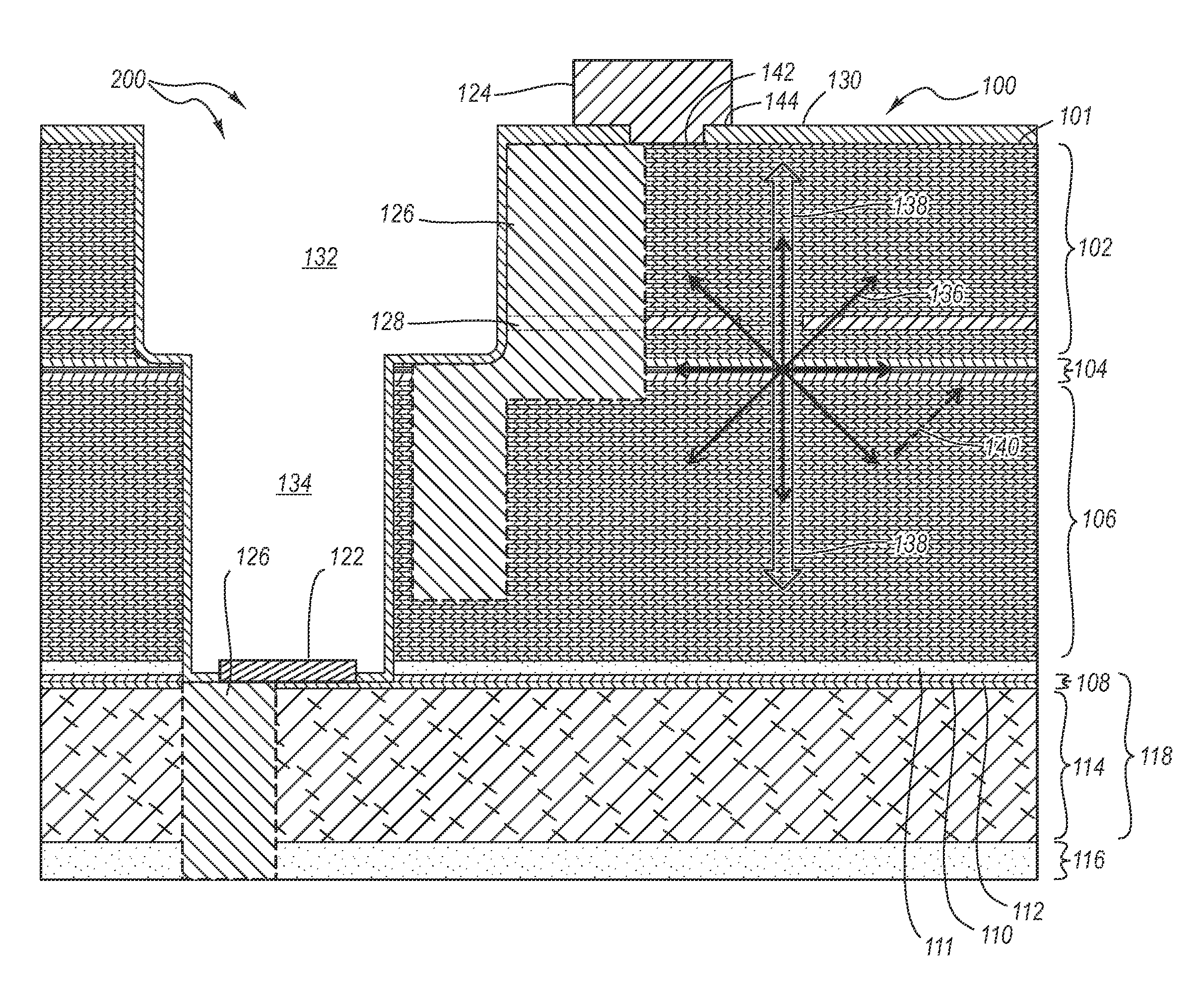Vertical cavity surface emitting laser with photodiode having reduced spontaneous emissions
a photodiode and vertical cavity surface technology, applied in semiconductor lasers, laser details, electrical equipment, etc., can solve the problems of reducing affecting the accuracy of laser energy measurement, so as to reduce the responsivity of the photodiode and increase the band gap
- Summary
- Abstract
- Description
- Claims
- Application Information
AI Technical Summary
Benefits of technology
Problems solved by technology
Method used
Image
Examples
Embodiment Construction
[0034]Embodiments described herein, implement various optimizations to reduce the amount of spontaneous emissions reaching a photodiode in an integrated VCSEL photodiode combination structure. Such optimizations include using absorbing layers at various portions of the structure, varying the geometry of the structure to change reflective angles, using optical apertures to the photodiode, changing the reflectivity of the mirror, changing the photodiode fabrication to be more impervious to spontaneous emissions at wavelengths different than the laser emissions, creating absorbing contacts, and using doping and implants to reduce photoluminescence caused by reemission of photons from absorbing materials.
[0035]An integrated photodiode and VCSEL structure will now be described with reference to FIG. 1. Notably, this example is simply one example of an integrated photodiode and VCSEL such as is described in U.S. Provisional patent application Ser. No. 10 / 877,915, titled “Light Emitting De...
PUM
 Login to View More
Login to View More Abstract
Description
Claims
Application Information
 Login to View More
Login to View More - R&D
- Intellectual Property
- Life Sciences
- Materials
- Tech Scout
- Unparalleled Data Quality
- Higher Quality Content
- 60% Fewer Hallucinations
Browse by: Latest US Patents, China's latest patents, Technical Efficacy Thesaurus, Application Domain, Technology Topic, Popular Technical Reports.
© 2025 PatSnap. All rights reserved.Legal|Privacy policy|Modern Slavery Act Transparency Statement|Sitemap|About US| Contact US: help@patsnap.com



